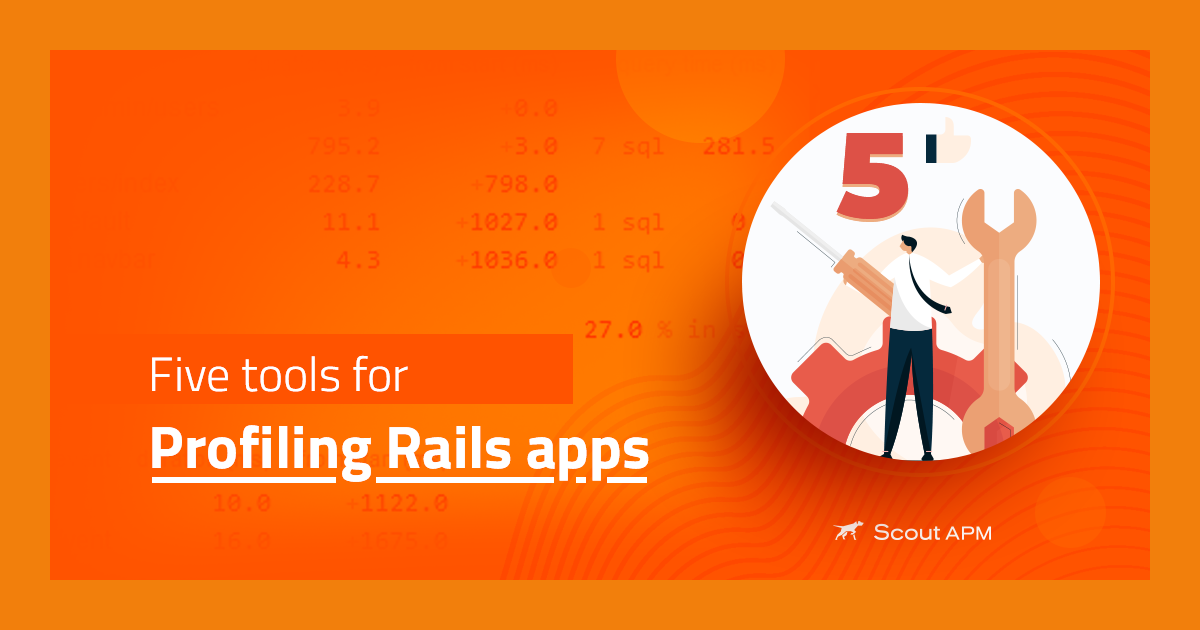Program Outages: Why That Won't Happen With Scout

Meta Description: Here’s why Scout APM prevents Program Outages and supports your business with smooth operations
We all know how we feel when there is a power outage. Think about that feeling for a user using your web application that is not working. Frustrating, huh? Well, the statistics out there are also swinging toward your defense. It was found that only 6% of customers using your application are willing to stay loyal to you after an outage, and 78% would just take the business elsewhere.
Those figures are haunting for any business. This means that any kind of inconvenience to your customer could cost the company a lot. However, there are ways to mitigate these issues; this is our favorite topic. Application Performance Monitoring is an important tool for dealing with situations like this, and we will talk about it today.
APM Outages
When a program fails, it often creates chaos for the people working on it and those using it. It causes a bad taste for the users who, up until now, have been using happily reliant on your app to work fine.
A downtime or an outage is a nightmare for businesses. It creates a lot of bad press if it is severe and a lot of angry customers at the least.
What is an APM Outage
What happens in an APM outage is that a glitch overtakes the system. This could cause the application to no longer function the way it was planned. This can happen when key metrics of the system are not monitored properly. This includes the following scenarios:
- Overuse of system resources or overload of queries
- One of the microservices has stopped working due to a cloud platform outage
- Third-party service providers issues
- A bottleneck in transactions
- Code and syntax errors
- Breach in the system’s security caused by a hacking or a virus
- Faulty reconfiguration during an update
- Slow response times
- Maintenance or updates in the systems
For a layman, this means that the app or the website is unavailable for some reason or the other. Your user can no longer “be on” your app for its intended purposes, which can cause frustrations on both sides of the platform. Your IT team will be scrambling to find and fix the issue. Your customer can become irate and find an alternative immediately. APM Outages can become costly.
While maintenance is usually planned, many of the other issues are not. These issues, however, can be mitigated. Because if these issues are not taken care of, it can cost a company a lot.
What an APM Outage Can Cost a Company
When a program or an application crashes, there isn’t a lot of good news for a company. While it can be considered an opportunity to learn, it is a time-consuming fix, and users want it done quickly.
One of the biggest costs to the company is losing customers. To sum up, this is losing business, profits, and reputation. Customers, the primary source of income for the company, hold a special position as stakeholders. If your application is unreliable at some point, they can leave for the alternative easily. They can also create a social media ruckus for the company.
In October 2021, Facebook faced a major downtime in which billions of users were locked out of their accounts. It didn’t only affect one part of the business, which is Facebook, but it also affected the use of Messenger, Instagram, and Whatsapp. Thousands of users flocked to alternative social media outlets to vent or communicate with friends. Facebook also met with a significant loss in share price due to the 5-hour outage. This resulted in Mark Zuckerberg losing $6 billion in personal income due to the 4.9% drop in share prices.
With the world being significantly connected through apps, it is more and more important to maintain uptime for your applications. As you can see from Facebook’s example, businesses cannot afford to have downtimes. With only 5 hours of downtime, the repercussions were immediate and heftily costly.
What you Should do to Prevent Outages
To prevent outages, there are certain steps that you can take to reduce the harmful impact of an impediment. Here are some ways that you can mitigate these issues in the long run:
- Audit Your Environment: You need to have an overview of all the microservices, servers, systems, and tools that you are using as an organization. It provides you with an idea of what resources are being used, how, and what needs to be done away with or what needs to be updated. Your environment does not need noise.
- Consolidation of Tools: After the audit, assemble all the tools you have deemed necessary for your application. The more organized your workspace will be, the better it is for you to understand what is happening.
- Innovation: It is important to focus your resources on innovation and running your current systems. If innovation is an important part of your company’s philosophy, it will help you work towards ensuring uptime for your application or future applications as well. Continue to look into options that will help your app stay online.
- Invest in an APM Tool: Employ an APM tool. It should not be forgotten in the list of tools you need. It will simplify your monitoring and show you the bigger picture of what is happening.
How Scout Prevents Outages from Happening
Now that we know what outages or downtimes are, we can look for a solution. Things that have happened in the past give a good opportunity for developers and businesses to learn from it - despite the heavy cost. But this new insight and perspective can be valuable to rebuild and ensure outages do not happen.
Issues do happen. They are rare for the most part. However, it is not something that can be avoided altogether. So, the quick fix is to make sure that there is a strong monitoring philosophy backing the IT team. This way, issues can be caught before they leave larger impacts on the system.
Scout APM is one such tool. Developed by developers to make deploying, testing, and observing simple, this tool is one of the more sought-after tools in the market, and here are 6 reasons why:
- It is always monitoring. The promise is true, it monitors 24 hours, 7 days a week, to let developers innovate and be at ease. It will immediately alert you when something is not right.
- It helps developers connect anomalies with the endpoint creating an issue.
- Immediately find slowing requests. What’s best is that it will help you find the issue so quickly your end-user won’t know what happened.
- Scout APM has filters that will help you easily find queries, transactions, and any other content with similar attributes to its Crossfilter.
- Connecting which source code is causing a bottleneck can be a hassle for developers if done manually. But Scout APM will point you in the right direction.
- Scout’s system knows exactly which developer to contact when an issue arises. This effectively reduces communication channels, making fixing issues more efficient.
Scout APM simplifies everything for the developer. With robust documentation that will help you find answers to all your questions, it keeps developers ahead of the game. It has a strong philosophy on what to monitor and why. Most of which is to support your company make the right decisions for your web application.
When your company has to deal with multiple databases and systems to support your app, here’s what Scout will monitor to ensure your uptime. It takes the guesswork out of performance monitoring so that you have the right information with you.
The right performance insight will help you and your IT team code and develop efficiently. It is a challenge to proactively track performance consistently and at all times. Humanly, it only means creating a repetitive job and not being creative. Scout APM promises to fix this by tracking all performance bottlenecks and regressions in real time. Although there is no one way for all companies to work the same way, Scout easily provides a system that will fit you.
You start by prioritizing the metrics and baselines that you need to monitor. It then easily ensures you’re on track and alerts you immediately if anything sways from your norm. It helps you make practical and well-informed decisions.
Scout APM’s add-on solution will support your program if it is written in PHP, Python, NodeJS, Ruby, Phoenix, or Elixir. With its help, you can easily resolve critical performance and stability issues. The issues that are taken care of are as follows:
- Slow SQL queries
- Slow requests such as HTTP and Database Calls
- Expensive N+1 logic
- Throughput and response time
- Transaction and response time traces
- Bottlenecks in capacity
- Sources creating memory bloat and leakages
- Memory and CPU use
- Response times
Scout is the tool that will monitor all these issues and bring them down to the single line of code that is causing them. You get analytical reports on how the transaction behaves with an intuitive UI. You get a 360-degree overview of your application’s environment. This will ultimately help you proactively track everything without needing to be in front of the screen at all times.
With Scout, observability is no longer an issue. Track unique endpoints, paths, requests, and users that cause problems in the system. Remove bottlenecks before they impact the greater system. There is a lot that it can help you with. Your investigation time into finding an issue is greatly reduced. Providing visibility ensures that power outages are not a problem for you to deal with.
Scout APM is also hailed to help reduce your overheads. You only pay for what you use, and it is transparent. What’s amazing is that you can also try Scout APM for 14 days without any obligations or credit card sign-up.
Conclusion
To ensure a break-free performance of your web application, you have to be vigilant. To do that smartly, it takes a little bit of forethought. While you can hire IT professionals to focus specifically on monitoring, it helps by giving developers tools to improve technology rather than just monitor what could go wrong. This is why tools like Scout APM are created by developers to help each other.
Scout APM handles program outages like a pro. With key metrics already set out, you must set your baselines and thresholds for it to start monitoring. Developed by developers, this tool sets out to support IT teams globally and simplify their work so they can focus on writing better and newer code for more innovative tools and products. Try out Scout APM with its 14-day trial, and you’ll see the difference.




